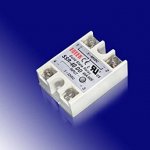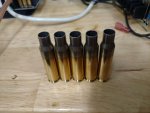all the brass of the same brand/lots looks similar...its brand vs brand that are different, like lake city shows heavy marks, while hornady barely shows anything
ive only annealed a few types so far...but what i found was...
hornady 6creed brass (all same lot)...i weighed 10-15 pcs, had a pretty big spread, i think like 5-6 grains...i took 3 of the mid range pcs and it gave me codes like 134, 135, and 136...so i used the middle...i should have done a heavy piece and light piece, but i was loading up 20 rounds to go shoot, and didnt think about it at the time
lake city 308 (same lot)...same as above, but spread was smaller, like 2-3 grains iirc, i checked 3 pcs and got 155, 155, and 156...so i used 155
starline 223 (same lot)...did similar, spread was pretty small, i think it was all less than 2 grains...i checked 2 cases and got the same number, so i used that
above codes arent the actual number codes, just for examples...i cant remember them off the top of my head, theyre written down at home
id only expect the codes to be as consistent as the brass quality itself, but its still easier/more consistent than a flame and a roller imo...especially when changing out from magnums to 223 sized cases over time
i generally dont mix brass lots anyways, ive known that was bad practice for any consistency for a long time...the only thing i have mixed lot is some 308 Federal brass, but it is currently all loaded up with a generic 175 smk load i just use for random 308 stuff
i do have a bunch of lapua 223, 6.5creed, and 308...and some neck turned 6.5prc hornady, but all of that is loaded, as well, so i wont be able to mess with it until its shot up
all said, i dont think the amp is going to improve much of anything down range...i havent had any issues with how ive always loaded...it just makes it less hassle on my end for all the various stuff i reload...less fiddling, just push a button and go





